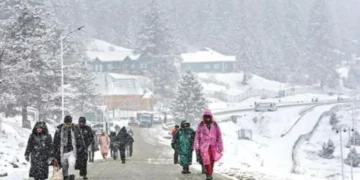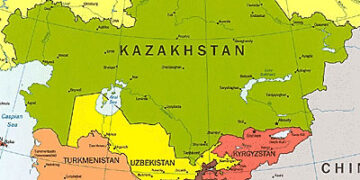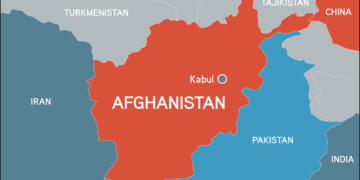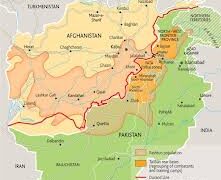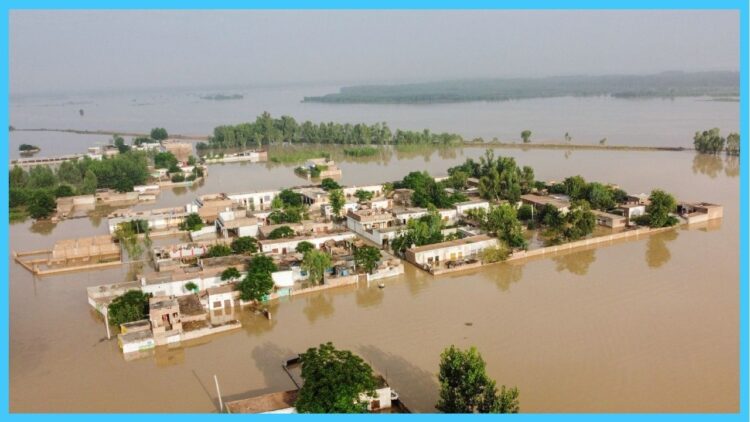LAHORE/ISLAMABAD: The Punjab Provincial Disaster Management Authority (PDMA) has cautioned that the flood threat in Punjab and downstream regions has not been completely eliminated, with heavy inflows continuing in major rivers.
Officials have warned that precautionary measures, including controlled breaches, may be required to safeguard vulnerable areas as the water surge moves further south.
PDMA Director General Irfan Ali Kathia said that while Trimmu Headworks currently faces no immediate danger, the flood wave has moved downstream towards Multan’s Head Muhammad Wala.
He noted that Head Sidhnai is already nearing full capacity and may require a breach to manage the pressure. He credited the timely breach at Head Qadirabad for easing stress on lower districts and preventing larger damage.
According to the PDMA, floodwaters from the Chenab are expected to reach Multan by Tuesday, where they will combine with the Ravi’s flow. The flood surge that passed Shahdara has already reached Head Sidhnai. Authorities may also breach the Mai Safoora Bund as a precaution, with between 20,000 and 24,000 residents already evacuated from nearby areas.

Kathia emphasized that a “super flood” is being observed simultaneously in three rivers. However, he maintained that the difficult but timely decisions already taken are yielding positive results. He also confirmed that Chief Minister Maryam Nawaz is personally monitoring the situation at Sidhnai and Head Muhammad Wala, where technical teams have been deployed to respond swiftly.
Meanwhile, Sindh Chief Minister Murad Ali Shah said his province is preparing for possible super floods but cautioned that the actual inflows at Panjnad will only be confirmed after September 4. He explained that the water now flowing from Trimmu would take three days to reach Panjnad, where it will merge with flows from the Sutlej and Ravi. Only then will the potential discharge at Guddu Barrage be clear.
Shah compared the current situation with the floods of 2014, when peak discharge at Trimmu was recorded at 592,000 cusecs, reducing to 450,000 cusecs by the time it reached Panjnad. This year’s peak has so far stood at 550,000 cusecs. He stressed that natural losses and slowing flows downstream may impact eventual levels at Guddu.
At the federal level, the National Emergency Operations Centre (NEOC) has issued flood alerts for September 1–3, citing heavy rainfall that could significantly increase flows in eastern rivers. The Sutlej River is already experiencing an unusual discharge of 253,068 cusecs, with further inflows of up to 300,000 cusecs expected due to upstream rains and dam releases.

At Jassar, the Ravi River is flowing at 60,094 cusecs but could swell to 150,000 cusecs in coming days. The Chenab, flowing at 94,728 cusecs at Marala, is also expected to receive heavy inflows from rainfall in Indian Illegally Occupied Jammu and Kashmir (IIOJK) and upstream reservoirs. Tributaries including Jammu Tawi, Manawar Tawi, and Palkhu have also been put on high alert for potential severe flooding.
The NEOC has warned that low-lying settlements and riverbank communities remain at risk of inundation, with possible breaches, crop damage, and displacement.
In Khyber Pakhtunkhwa, Chief Minister Ali Amin Gandapur reiterated the need for a national consensus on the Kalabagh Dam, saying Pakistan could no longer afford provincialism at the cost of national interest. He said such infrastructure was vital to manage recurring flood threats and secure water for future generations.
DG PDMA Kathia said that heavy rains in Himachal Pradesh and Jammu have swollen rivers, with the Chenab and Ravi merging and pushing floodwaters towards Multan. He added that India has only shared data on the Sutlej, while withholding information on other rivers. At present, however, there is no major flood threat at Head Marala.
The World Health Organisation (WHO) reported that recent flash floods and monsoon rains have killed at least 819 people across Pakistan, injured 1,111, and damaged 8,658 houses.
Meanwhile, Rawalpindi and Islamabad received heavy rainfall on Monday. The Water and Sanitation Agency (Wasa) placed teams on high alert, recording 40mm of rain in Saidpur and 66mm in Golra. In Rawalpindi, 25mm was recorded at Shamsabad, 35mm at Pirwadhai, and 60mm at New Katarian. At Katarian, water levels in Nullah Lai rose to 13 feet, while at Gawalmandi they reached 4 feet. Wasa MD Saleem Ashraf confirmed that a rain emergency had been enforced and that heavy machinery was deployed to deal with any emergency.




































